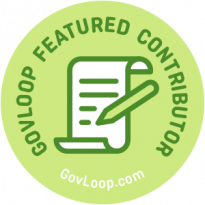Taking on additional responsibilities or roles at work can be a tremendous opportunity, but that doesn’t mean it’s not overwhelming. If the addition of a new role is sudden and unexpected, the overwhelm can be even greater. Maintaining the perspective that the new role is an opportunity can help mitigate stress, as can several time-proven techniques for productivity.
Eisenhower Matrix

President Dwight Eisenhower utilized a quadrant approach to prioritizing his daily work, and this practice can be applied to any role. The approach was created from his belief that “What is important is seldom urgent and what is urgent is seldom important.” This approach categorizes activities into four distinct areas:
- Do First — These are your most important tasks — the ones that impact how others get their work done. A “Do First” task could be a report for your boss, a review of a document on a tight deadline, or an activity that impacts the immediate well-being of a constituent.
- Schedule — These tasks are important and need to get done but can wait until a specified time. Items in this quadrant can include personal tasks like going to the gym, making a doctor’s appointment, etc. Getting them on the calendar along with your work tasks will support a healthy work-life balance.
- Delegate — This requires an honest look at what you can pass along to a colleague. If you are called into a last-minute meeting, is there someone who could attend in your place? Is there an urgent request for a report that someone else has the bandwidth to support in the time frame requested?
- Don’t Do — These are typically procrastination activities — checking social media, double- checking already completed tasks, etc. Call out the things that get in the way of you doing the important activities.
This practice helps bring to light what among your tasks truly matter, and can help you see the impact you’re consistently having on your organization.
Time Blocking
Time blocking refers to setting aside a specific amount of time for a task or a set of tasks. If you are filling multiple roles, consider setting a time block for each one — 9:00 AM-11:00 AM for work belonging to Role A, 11:30 AM-1:00 PM. Role B, and so forth.
The Pomodoro Technique is a time-management method that suggests breaking tasks into 25-minute blocks of work, followed by brief breaks in between. The method emphasizes setting a timer to keep the time frames consistent. In fact, the inventor of this approach, Francesco Cirillo, used a kitchen timer shaped like a tomato, which is where the name comes from.
To help you make the most of time block techniques, identify your peak productivity hours. If you have the most bandwidth for writing projects first thing in the morning, block all of that activity into the first part of the day. If you need to ease into the day, make your morning block your admin time, where you review materials or create reports. Consider batching similar tasks, even if they cross between roles, into time blocks to minimize context switching.
Take Time for You
Self-care is critical for efficiency. Building in breaks, even if you are not time blocking, helps you maintain focus and prevents burnout. These breaks should involve healthy activities like stretching, taking a walk (even if it’s just along office corridors), talking to a trusted colleague, or even reading a book. In addition to the planning involved in using time blocking or the Eisenhower Matrix, you also need to build in time for review and reflection. At the end of the day or week, assess what’s worked for you, and adjust accordingly.
Adding structure to your workflow helps reduce overwhelm and gives you back a sense of control over tasks that may have felt unmanageable. In turn, this allows you to fully capitalize on the opportunities that come with expanded responsibilities.
As the founder of GovEvents and GovWhitePapers, Kerry is on a mission to help businesses interact with, evolve, and serve the government. With 25+ years of experience in the information technology and government industries, Kerry drives the overall strategy and oversees operations for both companies. She has also served in executive marketing roles at a number of government IT providers.





Leave a Reply
You must be logged in to post a comment.